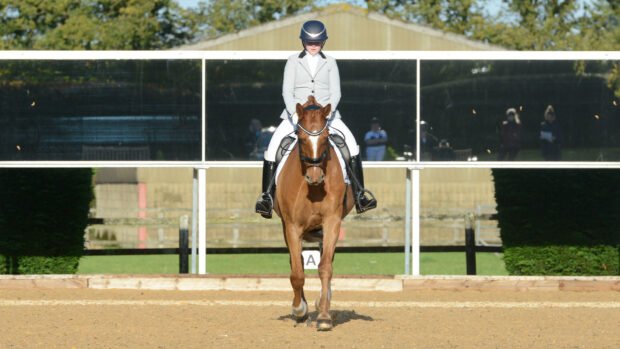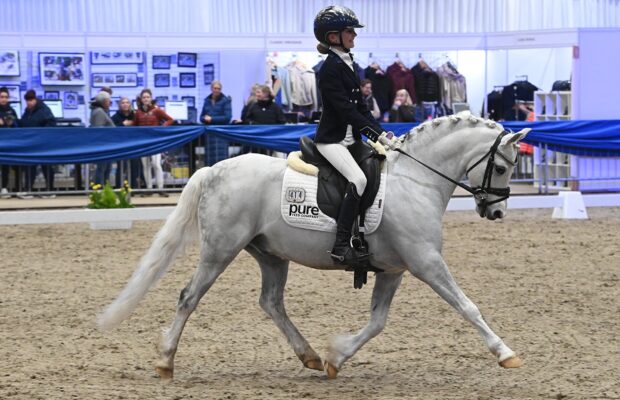Are you fed up of your horse cutting the corners in your arena? Or do the judges’ comments on your dressage test sheets often include “could have used the corners more”?
Poorly executed corners cost marks and makes doing the next movement, such as turning at A or riding a transition, more difficult. To teach your horse — and yourself — not to cut them, list one dressage judge Sue Carson recommends the following exercise.
How to ride a good corner for dressage
- In trot, ride a square at one end of the arena, turning across the middle at E or B.
- Two strides before each corner, ask your horse to walk.
- Imagine the horse’s whiskers touching the wall so that you ride well into the corner, before turning and trotting out of it.
“Push the horse sideways with your inside leg so that he bends his body through the corner — think about pushing the quarters towards the outside of the arena,” says Sue.
- As the horse becomes confident and consistent, instead of walking, slow the trot into the corner. Gradually build up to a consistent trot rhythm on the whole square, making sure you don’t cut a single corner. If you do, enter the next one at walk.
“It’s important to ride every single corner the same. Spend however long it takes to programme the horse to do it — it might be two sessions, or it might take five or six,” advises Sue.
- The next stage is to ride medium trot on the sides and slow to a jog-trot through the corners.
“This makes the horse push from behind to go forward, but in a balanced and controlled way, so that he is ready to come back. It develops the medium trot for the future,” explains Sue.
- Finally, go large around the arena. You should feel a difference straight away, because, says Sue, the horse will be pushing more from behind and have improved strength and power in the pace.
As well as teaching horses to use the corners, this exercise is good for establishing balance and improving transitions.
“It engages horses and makes the rider think a bit quicker — but one bad corner will undo all your hard work,” concludes Sue.




